black kimono, culture, japanese food
Mysterious Elegance: Exploring the Fascinating World of the Black Kimono

Tokyo Terry
Posted on May 30, 2023
Share:

The black kimono plays an essential role in Japanese society. In modern Japan, people mostly wear them for formal occasions, such as weddings, funerals, and special events. Historically, black dye was difficult to both produce and obtain. As a result, a black kimono was quite expensive and exclusive to the elite, who only wore them on special occasions.
They often have an even more profound significance than the exact style kimono of a different color. Let’s look at some of the more popular black kimonos you may come across in Japan and when or if it is appropriate to wear one.
Yukata (浴衣)
If you have stayed at a traditional Japanese hotel (ryokan), you have likely already worn this kimono as pajamas. Guests also use them at Japanese hot spring resorts. The kanji for “yukata“ literally translates to “bath clothes.” The yukata is the most casual kimono style; they are inexpensive, simple to put on, and can be worn by both men and women.
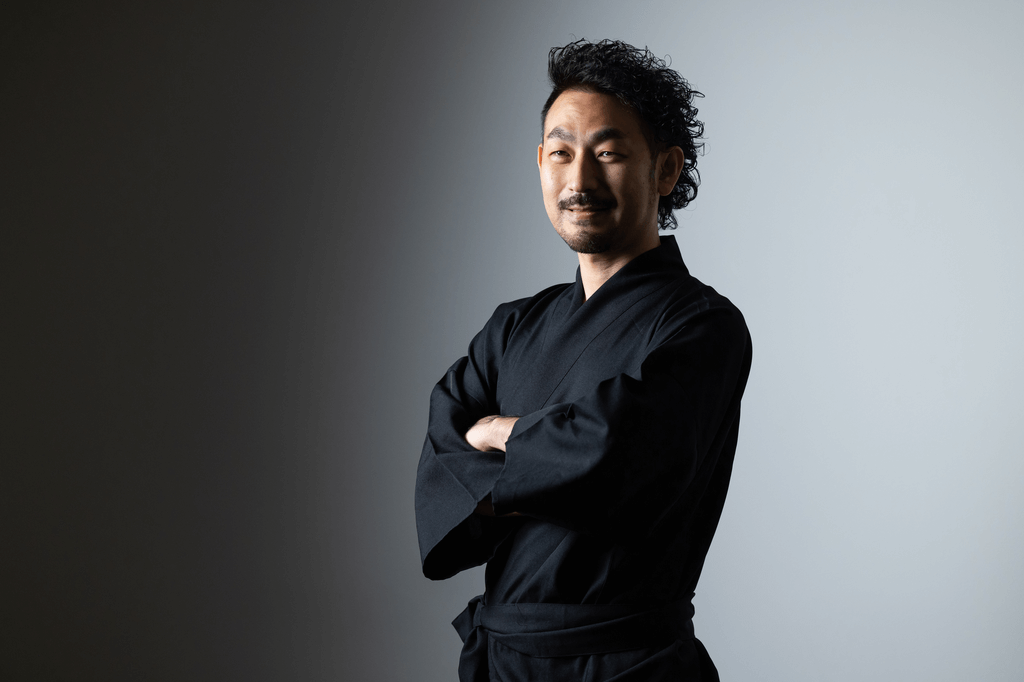
They do not need any inner lining or undergarments, making them the perfect beach kimono. Black yukata are still officially casual, but you can wear them at bon festivals and other outdoor summer events. If you wear high-quality black yukata with the traditional Japanese sash (obi), they can even be worn at semi-casual events.
Komon (小紋)
In Japan, people commonly wear kimonos as an everyday garment, and the komon kimono is the most common. The komon kimono comes with a nagajuban, a casual cotton undergarment. Additionally, both formal and casual kimonos use obi. There are also komon for men, but they are generally less ornate than the female version. The name komon means “small crest” and comes from the small patterns printed or woven into the fabric.
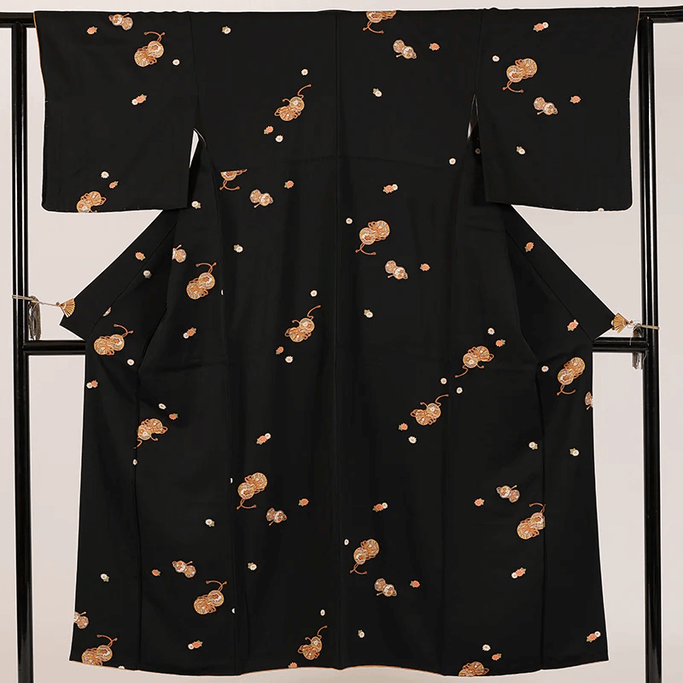
Moreover, wearing a black komon kimono in public is acceptable as it does not hold any particular significance. However, evolving attitudes towards kimonos may seem overly formal in specific casual settings, exceptionally when crafted from high-quality materials.
Would you like to enjoy snacks as elegant as the black kimono? Then try Sakuraco! Sakuraco delivers traditional Japanese snacks, sweets, tableware, and more from local Japanese makers right to your door, perfect for a pleasant snack time at home!
Iromuji (色無地)
Iromuji kimono uses a single silk fabric shade, deriving its name from its minimalist appearance. It is the least formal type of kimono that can feature a family crest or kamon, and the number of crests attached officially indicates the level of formality of the kimono. Typically, the iromuji kimono displays only one crest, making it the preferred choice for tea or graduation ceremonies.
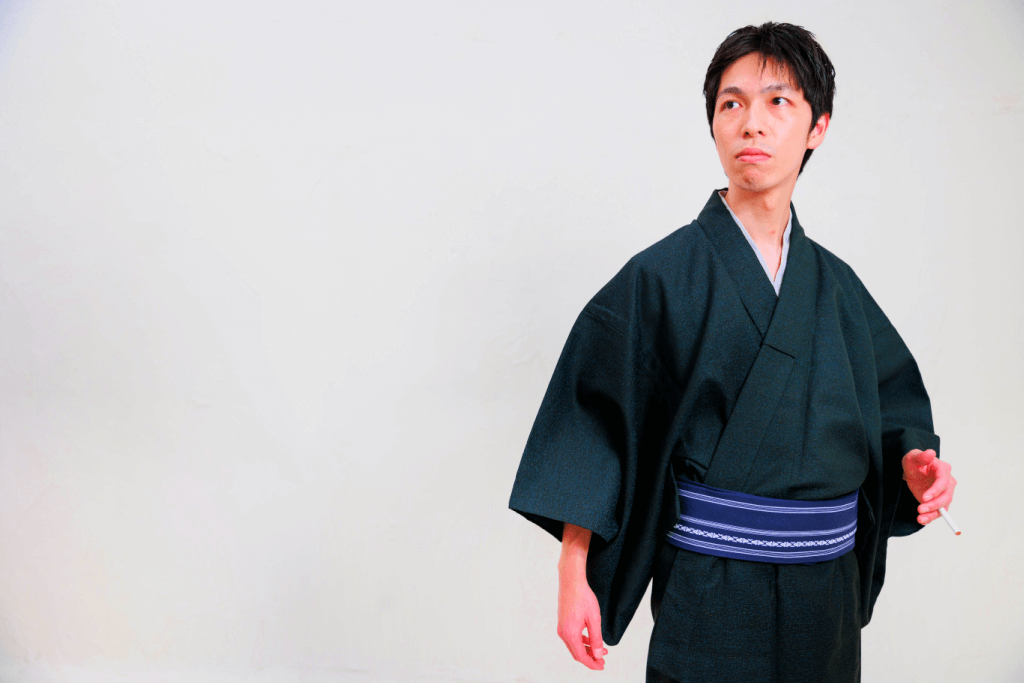
It is also the traditional white kimono (shiromuku 白無垢) for Japanese brides, albeit with more stylized designs. Black iromuji, known as mofuku (喪服), can feature up to five family crests, representing the highest level of formality for a kimono. It is important to note that mofukuis are most suitable for funerals, and people should avoid wearing them in the general public.
Kurotomesode (黒留袖)
Traditionally, unmarried Japanese women wore formal kimonos called furisode with long sleeves that draped towards the ground. You can still see young women wearing these kimonos on a coming-of-age day. Once married, it was customary to cut the sleeves to create tomesode. If the fabric is colored, the kimono is called irotomesode. If the fabric is black, the kimono is called kurotomesode. As a very formal kimono, it can have one to five family crests.
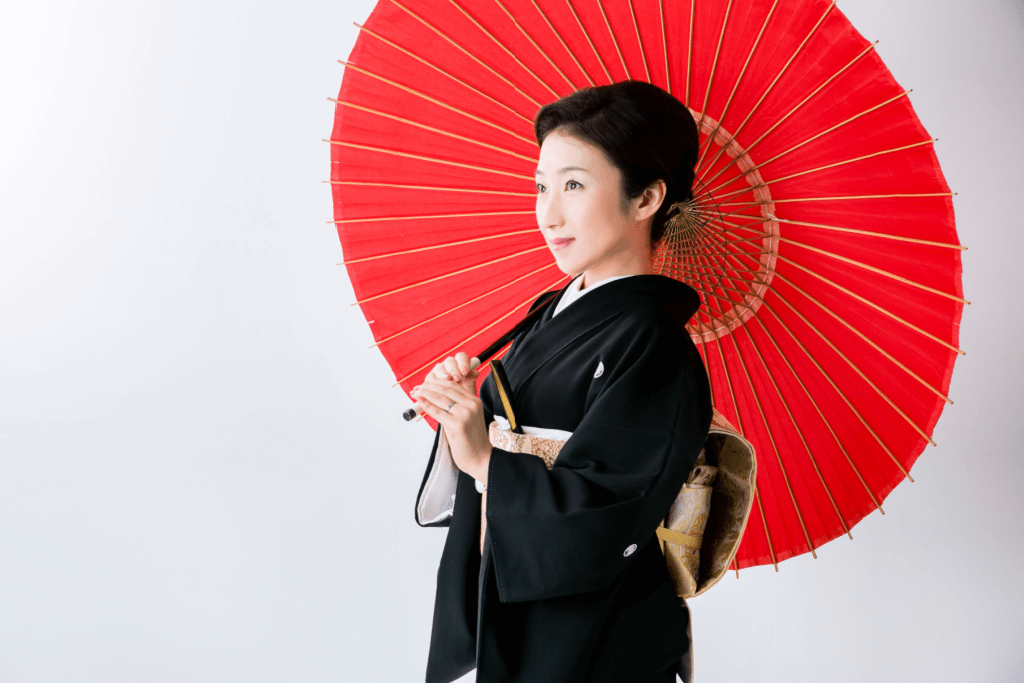
While irotomesode is for any adult woman, married women specifically wear kurotomesode regardless of marital status. At wedding ceremonies, especially the mother of the bride and groom, wear the kurotomesode kimono. It is also customary for the woman who introduced the couple to wear kurotomesode at their wedding.
Montsuki (紋付)
During the Edo era, monsuki kimonos, made from silk, gained popularity among men. Initially, they were semi-formal attire for samurai but gradually evolved into formal wear. Because they are so formal, these kimonos have five family crests.
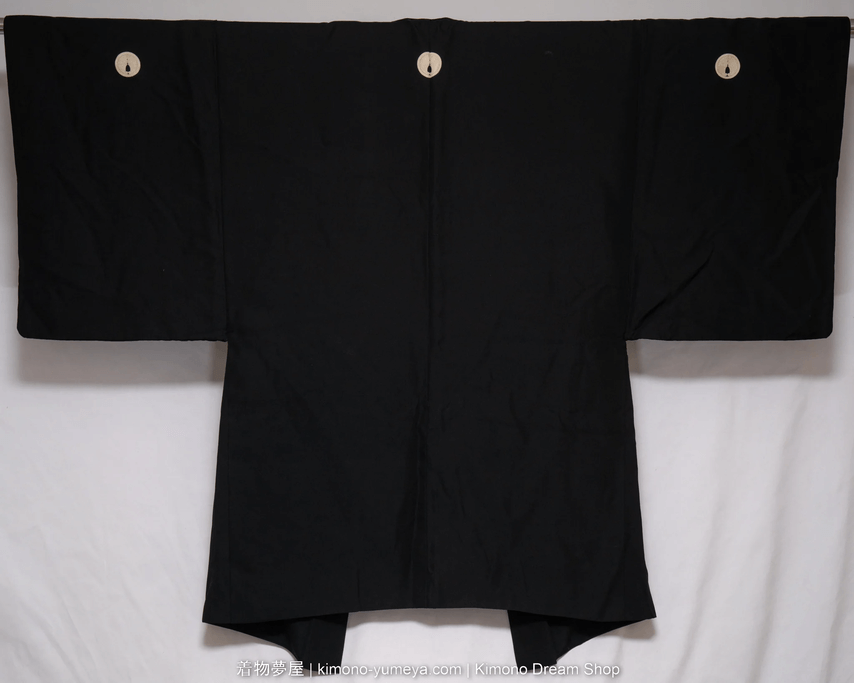
Men wear black monsuki at formal occasions such as award or engagement ceremonies, high-level tea ceremonies, funerals, and weddings. They are also formal wear for sumo wrestlers. You should never casually wear these black kimonos in public, as they carry significant meaning.
Hikizuri (引きずり)
In the past, wearing hikizuri was a sign of high society. High-ranking and wealthy women mostly wore them. Nowadays, they are worn by geisha during tea ceremonies. The hem of this kimono is quite long and drags on the ground for a more alluring effect during traditional dances.
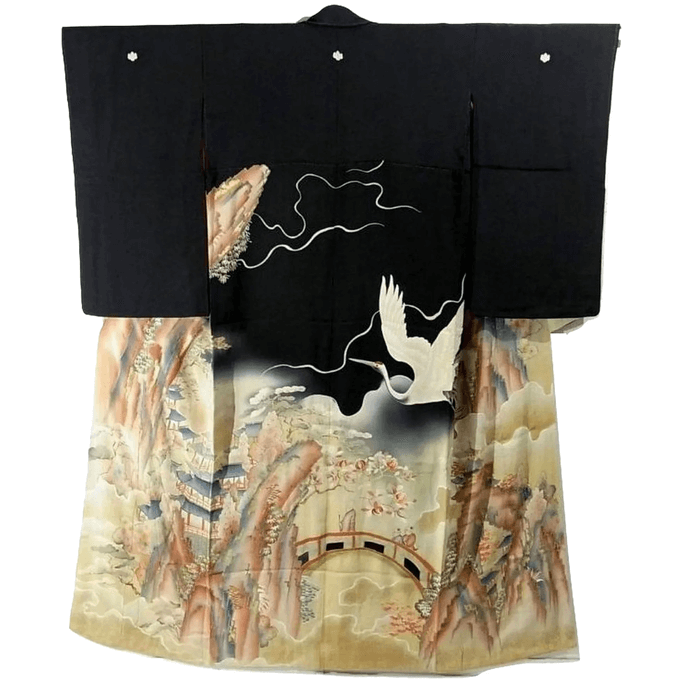
Black hikizuri has no special meaning, but this is not a casual kimono to be worn around town. To wear one implies that you are a geisha or apprentice geisha (maiko). They are, however, famous for cosplay if you are okay with the stares, troublesome length, and cleaning expenses!
In conclusion, the black kimono epitomizes elegance with its timeless allure and understated beauty. The sleekness of the black fabric exudes sophistication, while the intricate craftsmanship and traditional design details showcase a rich cultural heritage.
Whether worn as formal attire or a fashionable statement, the black kimono effortlessly commands attention and leaves a lasting impression. Its refined simplicity and versatility make it a symbol of elegance that transcends time and trends, captivating hearts and minds with its undeniable charm. Have you ever won a black kimono before? Let us know in the comments below.

Discover authentic flavors with Sakuraco
Get Sakuraco 

Discover authentic flavors with Sakuraco
Get Sakuraco 
Related Articles

Ancient Japan Astronomy: What Makes it Unique?
Ancient Japan astronomy provides a deep dive into the country’s rich history. Revealing how the stars, seasons, and stories have shaped its cultural heritage.

Capital of Japan: Amazing Historic Locations!
Did you know Japan has had several capital cities throughout the centuries? Historically, Japan’s capital city has changed around several times.

Golden Week 2019: Why Was It Special?
2019 Golden Week was extra special as Japan celebrated the Imperial succession and the start of a new era.
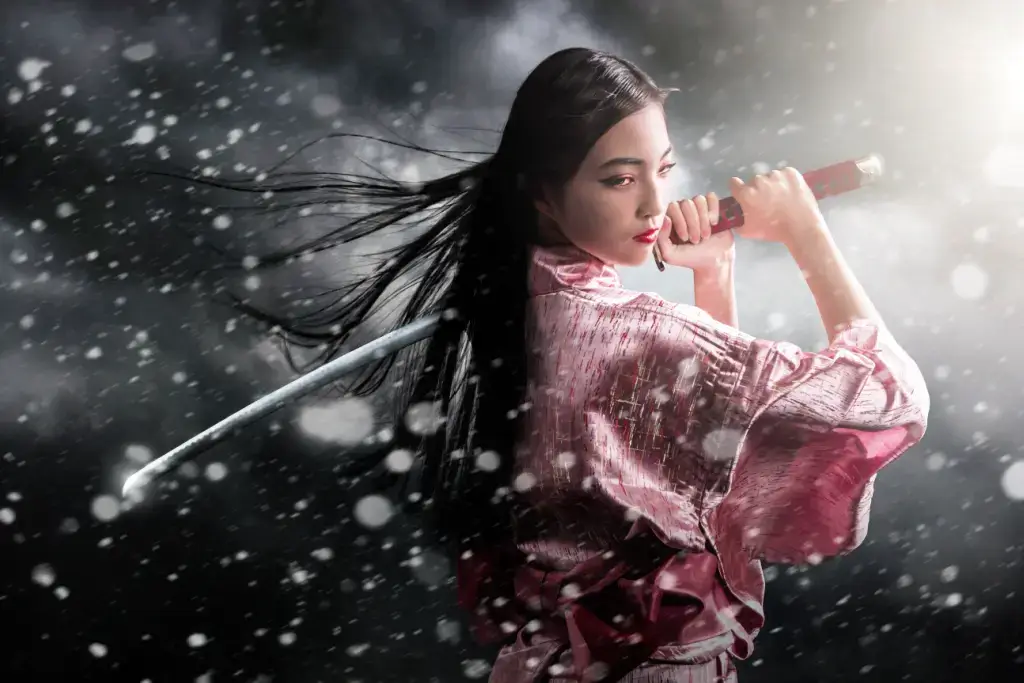
Female Warriors: The Amazing Onna-Musha of Japan
The onna-musha, were female warriors famous for their martial prowess, and many people respected them for their bravery and courage in battle.



